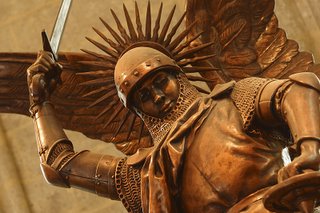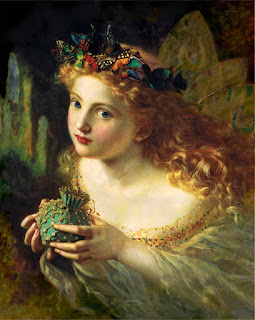
There are some 2,290,000 hits on Google for "archetype". It narrows down to some 194,000 when you add "marketing" to that search keyword. Most of the links are as much irrelevant as the archetypal approach has been en vogue recently in marketing and brand management. Just like with any other buzz word, if you are encouraged to take the "archetypal approach" by your brand consultant, there is a 50/50 chance that he or she is selling just another "paradigm shift". Still, through archetypes you can achieve clarity and an inspiring strategic direction for your brand and your business positioning. Some of my clients and colleagues have been asking me about the benefits of this approach as well as about basic knowledge resources on archetypes and their use in branding. This post tries to offer the basic idea:
By far the best (most accessible + most reader-friendly + most actionable) background reading on archetypes is Margaret Mark's and Carol Pearson's book The Hero and the Outlaw. It explains the basics - what an archetype is, where does it come from, what kinds of archetypes there are, and - most importantly - how to use the paradigm in steering your brand. (Don't forget to see Pearson's web page.) Meanwhile, there is a host of reliable and not-so-reliable resources on the web as well.
For basic definition of the term you can try this or this. What also works is to run a basic "what is an archetype" search on ask.com.
While you should find it pretty easy to get oriented in the terminology, there is still a long way from C.G. Jung's psychological theory and its application on one side to a viable business application based on archetypes on the other. Here Mark's & Pearson's book come in really handy.
When we use archetypes with my clients it is often to add depth and clarity to the brand identity they are aspiring to. Projecting your brand's future isn't a simple task - and also a very important one. Most of marketing managers are pretty good at sales and profitability modeling and other hard skills. Still, their responsibility is not only to create profit margins and incremental profit growth, but also (and I would say more importantly) meaning for their customers (which, in turn, generates profit and growth b.t.w.). Have a look at one of my previous posts about it - if you read some Czech, that is. Archetypes are a wonderful way to do it: they help you tell your brand's story consistently and vividly.
Normally, we work with the 12 archetypes derived from Jung and from Mark/Pearson which are organized along two axes - belonging versus individuation and mastery versus stability. On each end of those two dimensions sit 3 archetypes: so for example "belonging" archetypes would include LOVER, JESTER and REGULAR GUY/GIRL. The point is to try to understand what kind of archetypal story your brand is trying to tell, and how good it is in doing so. Also, we usually have a look at the category archetype (e. g. JESTER for the beer category) and decide whether there is opportunity in playing by the rules of the category or whether we should rather disrupt the status quo.
When you have arrived upon the archetypal profile of your brand, it'll make a lot of strategic as well as tactical decisions easier: decisions on new product development, on priorities in your consumer segments, on communication initiatives, on creating relevant brand experiences etc.
For the left-brainers I found an interesting reading of the term archetype. If you think Jung et al. is no more than just some new-age babble, you'll find comfort in this methodologically sound research paper.


Žádné komentáře:
Okomentovat